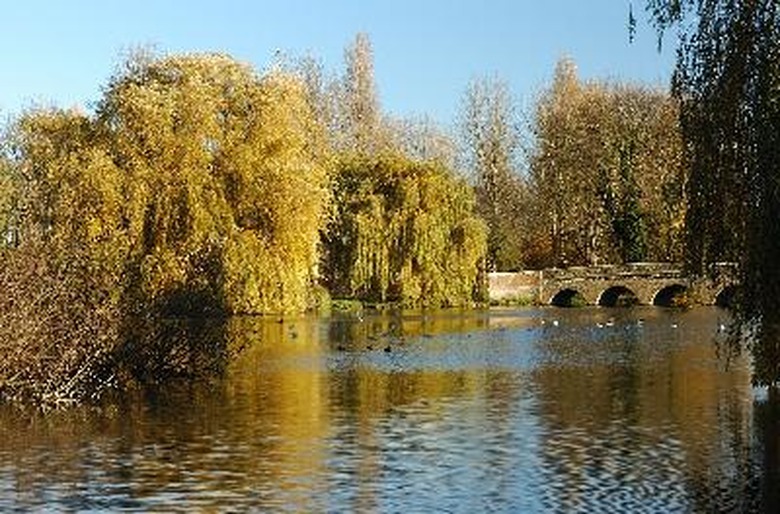Weeping Birch Tree Facts
The distinctive slumped form of a weeping birch tree (Betula pendula) quickly explains how the tree got its nickname. You will often find these trees in parks and gardens, commonly set near creeks or rivers where the branches dip down toward the water. There are some things you should know about the weeping birch before you decide to plant one.
Size
The sizing of a weeping birch tree depends greatly on the space you provide for it. With no obstructions, the weeping birch can reach a height of almost 8½ feet and feature a spread of more than 13 feet. This impressive expanse is why the tree is so popular in parks and large gardens, where the long branches can really spread out and create the distinctive weeping look. However, you can also prune the tree to fit in the space in which you want to plant it, providing that you never remove more than one-quarter to one-half of the foliage at one time. Some trees are also grafted in the nursery, which will limit the growth for smaller gardens. Grafting usually limits the growth to between 3 and 6 feet.
Production
Aside from the obvious branches, the tree features silvery or white bark that peels in some spots. The youngest branches are brown instead of white; the bark will fade out over time. Weeping birches also produce triangular green leaves that fade to yellow in the fall. The tree's small flowers and pods produce colorful blooms in the summer. The leaves and buds will fall off in the fall as the leaves begin to change.
Care
Weeping birch trees require at least six hours of full sunlight each day for the bark, leaves and flowers to achieve their full healthy color. The tree will withstand most types of soil; it grows best in moist (not wet) soil but can tolerate slight flooding or slight drought. Water the tree only if the top 2 inches of soil feel completely dry. Mulch around the base of the tree before the summer heat sets in to help the soil maintain its moisture. If you choose to prune the tree for size or shape, do so in late summer or early fall; any later and the tree will not recover before the winter frost and can experience serious injury.
Problems
The weeping birch tree is susceptible to two types of insect infestations: birch leaf miner and bronze birch borer. Leaf miners cause excessive defoliation on the tree, causing the branches to drop their leaves long before the usual winter drop. The first sign of this infestation occurs with small yellow spots on the leaves. These bugs are controlled with approved herbicides, generally through a spray applied to the leaves. The bronze birch borer will infest a tree and essentially consume it from the inside out. It is most likely to affect trees under drought stress. Stepped up watering and insecticide application can treat borer infestations, but heavy infestations will kill the tree regardless of your actions.
